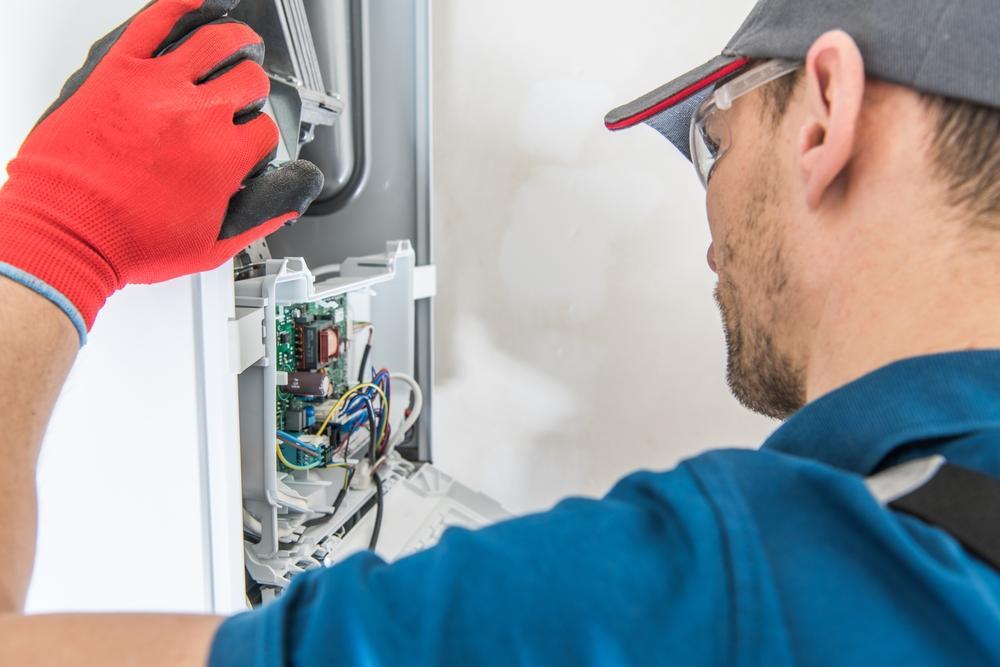If your furnace isn’t heating your home properly, you may wonder how to fix it. First, you can replace the air filter, clean the burners, and check the thermostat. Then, follow the manufacturer’s instructions. You may also be able to clean the furnace if the interior is dirty.

Replace an air filter
To keep your furnace working efficiently, replace an air filter regularly. The replacement interval will depend on the filter you use and how often you use your furnace. Generally, it is recommended to replace the filter every three to twelve months. Filters with MERV ratings of four to six should be replaced once every three to four months, while MERV 11 and higher need to be replaced every nine to twelve months.
The air filter in your gas furnace regulates the airflow in the furnace. If it is clogged, the air cannot flow freely and can cause overheating of the motor and blower. On the other hand, regularly changing the air filter can keep your furnace running smoothly for many years.
Clean up an unkempt furnace
When performing gas furnace repair in Chicago, one of the first things you should do is clean up the furnace. Soot is an indicator of poor combustion. You can also remove the furnace burners and clean them using a vacuum cleaner.
Another important step to take when repairing gas furnaces is cleaning around them. An unkempt furnace can cause a fire hazard and harm your family and home. Also, keep flammable materials away from your furnace, including paints. These can leak into the HVAC system and cause serious damage.
Check the thermostat
If the furnace doesn’t heat your home, check the thermostat first. Some furnaces use a battery to run, so you should check that the batteries are charged before you start repairing the furnace. If the battery is dead, the thermostat will not work and fall back to its default setting during a power outage. Also, clean any debris from the thermostat and ensure it is level and firmly mounted to the wall. It should also have no loose wires.
You may also want to check the air filter. A dirty air filter can cause the furnace not to run properly. If you have a high-efficiency furnace, removing the chimney pipe may be more difficult. However, this can help you identify any problem that you might have with the outside pipes. Depending on your type of furnace, you may also want to check the furnace’s inducer fan, which allows air to flow into the combustion chamber.
Clean the burners
If you’re working on a gas furnace, one of the first things you should do is clean the burners. You can use a brass brush or compressed air to clean them. Ensure not to use your fingers, as they can cause damage to the burners.
Another thing you can do is clean the flame sensor, which is found near the back of the furnace. This sensor is the safety feature on gas heating equipment; if it’s dirty, it may prevent your furnace from working properly. In addition, a dirty flame sensor can lead to oxidation and carbon buildup, which can cause the furnace to malfunction.
Replace a faulty thermostat
The thermostat is likely to blame if your gas furnace has recently stopped working. Usually, this device is programmed to shut down the system when the ambient temperature becomes too low or too high. If the thermostat has stopped working properly, try turning it back on or resetting it if necessary. Also, check any error codes on display, which may indicate that your furnace is set to shut down.
Some thermostats use batteries, so you should check the batteries to see if one of them is dead. You can try resetting it or replacing the battery if this is the case. If it still does not work, there may be a wiring issue, which requires professional repair.
Clean the hot surface igniter
The hot surface igniter is a component of gas furnaces and other heating appliances. It can malfunction or become weak over time.
The ignitor requires a 120-volt electric supply to function properly. This voltage allows the ignitor to heat silicon and produce a spark. If this supply fluctuates, it can short-circuit or trip the circuit breaker. So when the ignitor stops working, it’s a good idea to replace it. Another problem that may cause the igniter to stop functioning properly is a faulty limiter switch.
Image source: depositphotos.com





